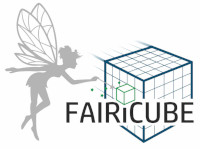Partners: Stiftelsen Norsk Institutt for Luftforskning, Norwegian Institute for Air Research

Use Case objective
UC4 addresses the pressing need to evaluate and map the potential for energy retrofitting and circularity in residential buildings to align with the European Union’s ambitious climate goals.
Currently, buildings are major contributors to both energy demand and greenhouse gas emissions. More sustainable practices in construction hold promise for reducing environmental impact, enhancing resilience, and averting raw material price hikes.
However, a significant challenge lies in the scarcity and fragmentation of data on building materials and properties. This gap impedes informed decision-making on investments and the promotion of circular and local materials. The UC4 scrollytelling demonstrates these issues in an intuitive and representative walk through while showcasing data and use case results.
Solutions and possible applications
UC4 bridges this divide by developing an agile model which enables the assessment of in-situ materials, energy performance, and emissions of residential building stocks. The model allows to estimate optimal renovation rates and evaluate the climate neutrality potentials in four European cities: Oslo (NO), Barcelona (ES) and Rennes (FR). These assessments can also be adapted for optimization work, considering local constraints such as fiscal and climate budgets, as well as the decarbonization of energy sources.
Researchers, analysts, city planners, and sustainability consultants may find the developed model useful. In addition, the developed model is crucial for the EU Green Deal to achieve energy efficiency, reduce emissions, and promote sustainable construction. The UC4 scrollytelling shows some in depth results of the energy performance evaluation for Oslo using the Episcope classification and machine learning method. The visual appealing walk through shows both scientific content and data examples.
Resources and further documentation
UC4 has been executed on the FAIRiCUBE Hub and a dedicated section in the Digital Library will provide more in-depth information on the research questions, workflow, data and ingestion, processing steps and ML applications, as well as solutions. A comprehensive table of resources links the UC4 open source code repository, data and meta data storage and publications.
